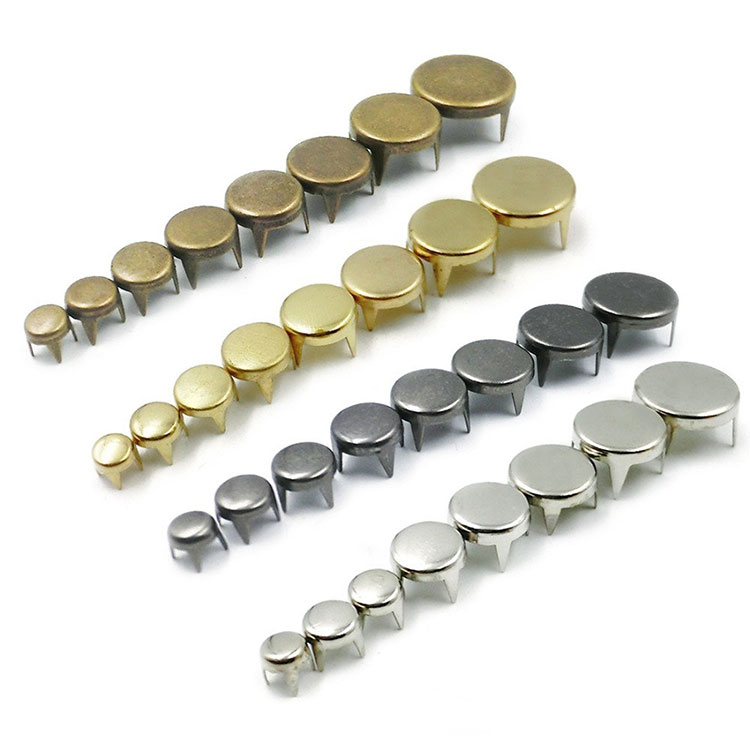Key features and details about metal rivets
2023-10-17
A metal rivet is a type of fastener used to join or secure two or more materials together by creating a permanent, strong, and reliable connection. Rivets are typically made of metal and are often used in applications where the joined materials need to withstand substantial loads, vibrations, or stresses. Metal rivets consist of a cylindrical shaft with a head on one end and a tail on the other end. Here are some key features and details about metal rivets:
Key Features:
1. Materials: Metal rivets are made from various metals and alloys, including aluminum, steel, brass, copper, and stainless steel. The choice of material depends on the specific application, including factors such as load-bearing capacity, corrosion resistance, and appearance.
2. Head Types: Metal rivets can have different head types, including flat heads, round heads, countersunk heads, and domed heads. The choice of head type affects the appearance and flushness of the rivet when installed.
3. Shaft: The cylindrical shaft of a rivet is the part that passes through the materials being joined. It can be smooth or include ridges (known as grooved or knurled shanks) to enhance grip and resistance to rotation.
4. Tail: The tail of the rivet is the end opposite the head. It extends through the materials being joined and is deformed or "bucked" during installation to create a secure connection.
Installation Process:
The installation of a metal rivet typically involves the following steps:
1. Drilling or Punching Holes: Holes are drilled or punched through the materials being joined, aligning them precisely to ensure a secure fit.
2. Inserting the Rivet: The shaft of the rivet is inserted through the holes from one side, with the head resting on the opposite side.
3. Deforming the Tail: The tail of the rivet is then deformed or "bucked" by applying force, either manually or using a riveting tool or machine. This process causes the tail to spread out and flatten against the materials, creating a secure and permanent connection.
4. Trimming Excess Material: In some cases, excess material may be trimmed or cut off from the tail to create a neat and flush finish.
Uses:
Metal rivets are widely used in various industries and applications, including:
1. Construction: They are used to join structural components, such as steel beams, aluminum frames, and sheet metal panels.
2. Aerospace and Automotive: Metal rivets are used in the assembly of aircraft, automobiles, and other transportation vehicles, where lightweight yet strong connections are crucial.
3. Manufacturing: Rivets are employed in manufacturing processes for products like appliances, furniture, and machinery.
4. Cabinetry and Woodworking: They are used to join wooden components in cabinets, furniture, and woodworking projects.
5. Marine and Shipbuilding: Metal rivets are used in shipbuilding and marine applications due to their resistance to corrosion in saltwater environments.
6. Leatherwork: In leathercraft, rivets are used to secure leather pieces together, such as in the making of belts, bags, and wallets.
7. Art and Sculpture: Metal rivets can be used as artistic elements in sculptures and art installations.
Metal rivets offer a robust and reliable method of joining materials together, making them suitable for applications where strength and durability are paramount. The choice of rivet type, material, and installation method should be selected based on the specific requirements of the project or application.



